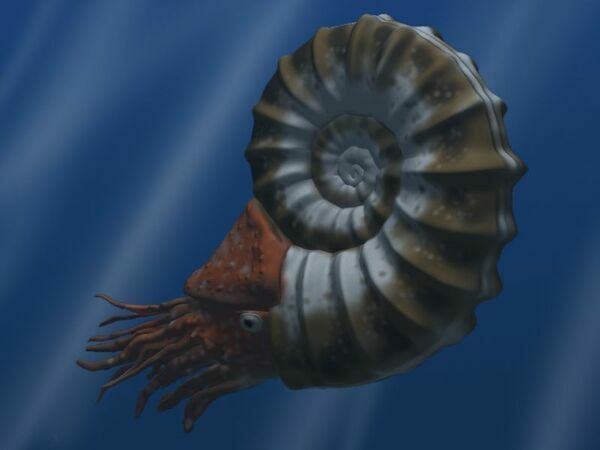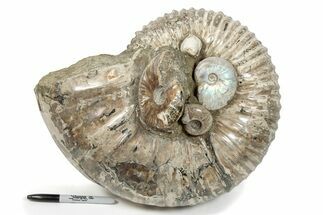15.5" Giant, Polished Ammonite Fossil - Madagascar
This is a giant, 15.5" wide, fossil ammonite from Madagascar. It quite robust, weighing in at 52 lbs and the shell has been lightly polished. A very impressive display piece.
It comes with a metal display stand.
It comes with a metal display stand.
About Ammonites
Ammonites were ancient marine cephalopods, similar to today's squids and octopuses, but with a defining feature: their distinctive, tightly coiled spiral shells. These shells, resembling those of modern nautiluses, served as both a protective home and a buoyancy aid, allowing ammonites to navigate the prehistoric seas with ease. First emerging around 240 million years ago in the Triassic Period, ammonites thrived for over 175 million years, adapting through numerous forms and sizes. As predatory creatures, they likely fed on smaller marine organisms, using their tentacles to capture prey. However, their long reign came to an end 65 million years ago at the close of the Cretaceous, coinciding with the mass extinction event that also eliminated the dinosaurs.
Ammonites were ancient marine cephalopods, similar to today's squids and octopuses, but with a defining feature: their distinctive, tightly coiled spiral shells. These shells, resembling those of modern nautiluses, served as both a protective home and a buoyancy aid, allowing ammonites to navigate the prehistoric seas with ease. First emerging around 240 million years ago in the Triassic Period, ammonites thrived for over 175 million years, adapting through numerous forms and sizes. As predatory creatures, they likely fed on smaller marine organisms, using their tentacles to capture prey. However, their long reign came to an end 65 million years ago at the close of the Cretaceous, coinciding with the mass extinction event that also eliminated the dinosaurs.
$1,950
SPECIES
Argonauticeras besairiei
LOCATION
Ambatolafia, Mahajanga Province, Madagascar
SIZE
15.5" wide, 7" thick, 52 lbs
CATEGORY
SUB CATEGORY
ITEM
#317498
We guarantee the authenticity of all of our specimens.
 Reviews
Reviews














